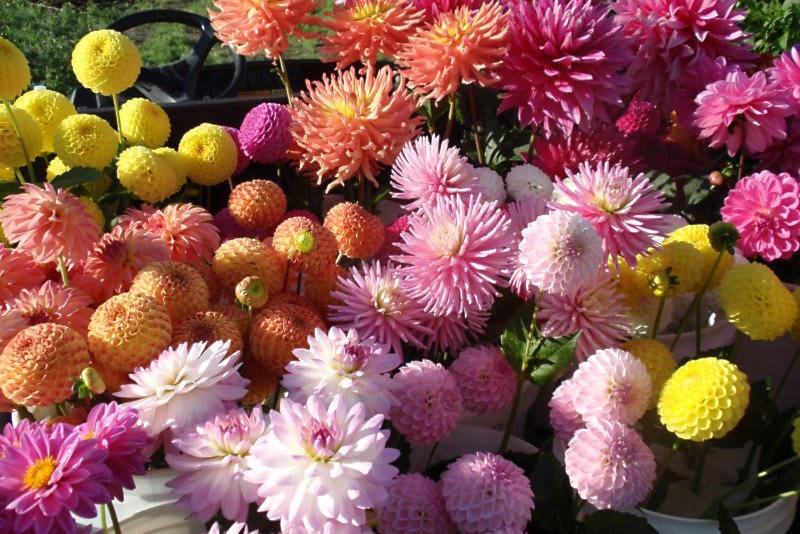Dahlias are one of my favourite summer flowers. These magnificent plants come in a wide variety of flower forms, sizes and colours, and they really add fresh life to a summer garden, carrying that marvellous display right through to the first hard frost.
Dahlias originated in Mexico and Central America. Those early plants grew five feet tall with small blood-red flowers. In 1519 Cortez, the famous Spanish explorer, discovered a plant which he named ‘cocoxochitl’. This novelty was sent back to Europe and soon thrived in the gardens of Spanish monasteries.
Late in the 18th century, the Abbe Cavanilles of the Royal Gardens in Madrid sent seeds of the ‘cocoxochitl’ to Andres Dahl, a well-known Swedish botanist. Dahl thought he had a new potato tuber and was bitterly disappointed that it was inedible. Still, intrigued with the flowers, Dahl began crossing various plant lines and created many new forms.
In 1789 the king of Spain held a festival to celebrate Spain’s discovery of this new plant. Since the name ‘cocoxochitl’ was difficult to use, the king honoured the Swedish botanist by renaming the plant dahlia (pronounced doll-ya, not dale-ya).
The Dutch and English also did a great deal of breeding work, and by 1798 the first of many new dahlias were planted in the prestigious Kew Gardens in England.
By the 1830’s, the demand for the plants soon outstripped the supply. Prices rose and fortunes were made and lost in dahlias. You might say it was ‘Dahliamania’! Gradually, the supply increased to keep pace with the demand, and soon tubers were being shipped around the world.
Today, breeding is taking place in England, Holland, Japan, the U.S. and, of course, in Canada.
Dahlias are a member of the ‘compositae’ family. This vast group of plants is represented in all parts of the world by some 800 flowers and is the largest family in all the plant kingdom. It includes such diverse plants as lettuce, artichokes, asters, chrysanthemums and zinnias.
The origins of today’s dahlias was probably ‘Dahlia pinnata’ and ‘Dahlia cocchinea’. The American Dahlia Society recognizes twelve groups of cultivars, based on external form and flower structure. Within these groups are thousands of named varieties of all flower forms, habits, heights and colours. The four most popular forms are the cactus, pompon, double and semi-double flowers.
The cactus form is prized for its cut flowers. Its petals are elongated, quill-shaped and can be curved toward the centre of the flower. Cactus form plants are tall, reaching four to five feet in height.
The pompon form has short, tight, cup-shaped petals that create a rounded flower. Its shape is similar to the decorative tufts used on clothes. The pompon flower is two inches in diameter and is produced on plants three to four feet in height.
The double and semi-double flower forms are often exhibited in one mixture from seed. Environmental factors may influence the degree of doubleness in dahlia flowers. Double flowers contain numerous rows of ray petals surrounding a central disc, and the petals can be round or pointed on the ends. Semi-double flowers produce fewer rows of ray petals. Dwarf plants are available in double or semi-double flower forms and range in height from 10 - 20 inches.
It is just about time to begin planting dahlias out in the garden. From the small bedding varieties to the giant dinnerplate size showstoppers, dahlias are now mainstream colour in today’s gardens. Take a look at the many new large-flowered compact varieties that bloom all summer and well into the fall. Most of these varieties are grown from cuttings and are ready to just pop in the garden or in containers.
